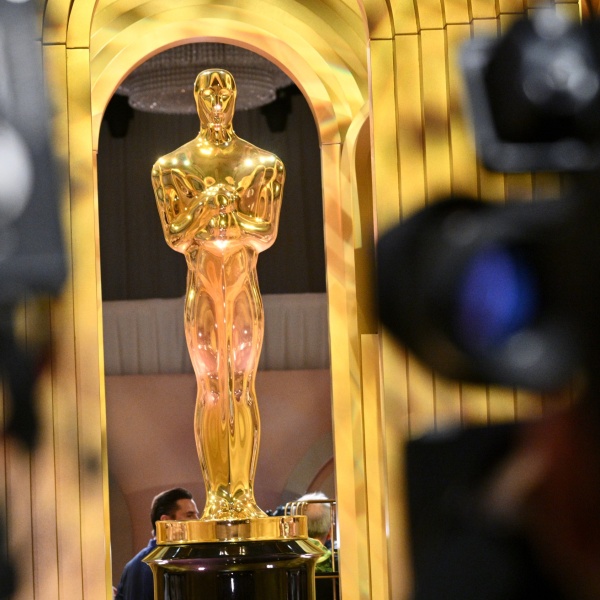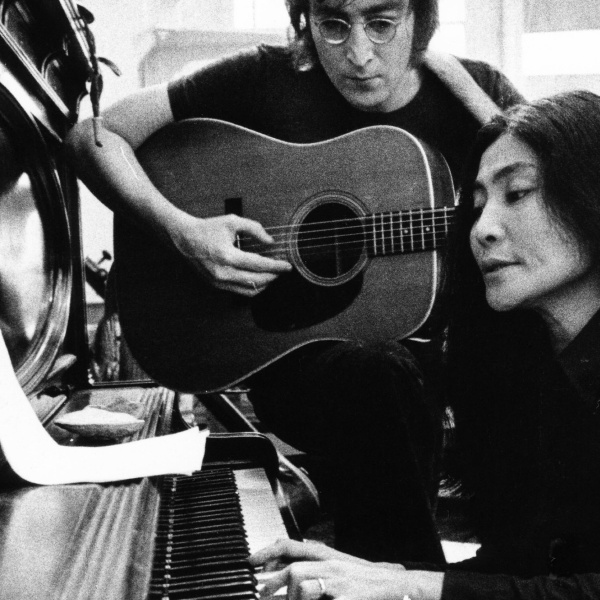Five Things We Learned From The Director & Star Of ‘We Need To Talk About Kevin’

Even if no other films had been released, 2011 would be a pretty good year for the movies purely by virtue of marking the return of Scottish director Lynne Ramsay, whose first and second features “Ratcatcher” and “Morvern Callar” marked the birth of a very special talent, but has spent the best part of a decade struggling to get films financed, particularly after spending some time trying to get an adaptation of Alice Sebold‘s “The Lovely Bones” made, before being pushed off the film when Peter Jackson showed interest.
But she’s finally back, with the adaptation of another difficult bestseller, Lionel Shriver‘s “We Need To Talk About Kevin,” which follows the mother of a near sociopathic teenager, who ends up being responsible for a school shooting. The film picked up ecstatic reviews when it premiered in Cannes early this year (we called it “bleak, but haunting,” giving it an A- grade), and in the collaboration between Ramsay and lead actress Tilda Swinton, seems to have the makings of a very special partnership.
We caught up with the pair in Toronto, where the film has been playing, and we’ve already run with some information from them both about future projects; Ramsay’s working on a sci-fi film, and something at Warp Films, while Swinton will butt heads with Bruce Willis in Wes Anderson‘s “Moonrise Kingdom.” Below are five more insights from the duo, from their take on ‘Kevin’ to Ramsay’s experience with “The Lovely Bones.” You’ll be able to see “We Need To Talk About Kevin” for yourself on December 2nd.
1. The film, by necessity, had to break away from Lionel Shriver’s novel.
Seeing as the novel doesn’t just deal with tough subject matter, but also has an epistolary structure (made up of letters written by Kevin’s mother to his father), the team had to do more than think outside the box. They had to reinvent it. Ramsay calls it being “the hardest thing I’ve ever done,” explaining that, “it was a super challenge. I think it’s a mistake to take books and say, ‘Oh, you can just translate that’ unless it’s Cormac McCarthy or something, which is super fucking cinematic in the first place. Some people were saying, ‘Oh, it’s a best-seller, just do a literal translation and voice over.’ But it doesn’t work as well, so it was really a cut and paste job. Rip it up, start again and put it back together.”
Swinton concurs, explaining that their film is really an attempt to capture the spirit and the drama of the book, without being a direct translation: “The film is inspired by the book,” she said. “It’s funny, the book is all about trying to explain things and is all written in words, as books tend to be, and this film was going to be about the inability of ever even breathing a word. It’s an adaptation of the basic situation, but it’s really a thing of its own making, this film.” Indeed, to some degree, stepping away from the book a little may have even helped to make the situation a little more universal. “I think this is the way in which the film is so honest about the powerlessness that parents feel on a daily basis,” Swinton said. “You don’t have to give birth to someone as challenging as Kevin to feel pretty close to the things that Eva feels in the early part of their relationships. I think that felt like a really rich theme that was not only pretty untapped, but also taboo. I don’t think people before this book really thought about talking openly about the idea of being an ambivalent parent.”
2. Swinton used the character’s wardrobe to get across certain aspects that couldn’t fit into the script.
Any actor worth their salt uses the costume of their character to find a way into the part, and to help to tell a story. With twenty years of the character’s life to get across, it was particularly important here. “We see her twenty years earlier and we see her twenty years later,” Swinton said of the time span in the movie.”And we need to indicate it quite succinctly where we’re at in the story — by the look and by the choices she’s making in how she’s presenting herself. So in the beginning she’s a pretty self possessed, sophisticated citizen of the world. She’s quite snotty about America. She’s really quite alienated from America and takes great pride and dignity in her Armenian roots. And then as her life develops, as she’s moved out of her boho apartment into this kind of shining mausoleum on the hill in the suburbs as she starts to be prettier and prettier and more and more J. Crew and the identity morphs, as identities do tend to do.”
We suggested that, by the end, after the tragedy around which the story develops, that Eva’s look becomes a kind of shield against the world, and Swinton confirmed that that was the intention. “She’s now lost everything that she built her identity on before, and she’s living in a sort of purgatory. She’s in disguise, she’s under cover, I would say, but of course she can never be undercover. She has this name, and she has this stigma and she’s going to have to, as Kevin would say, she’s going to have to suck it up.”
3. Generally speaking, Swinton’s work tends to come from friends, or those she’s worked with before, with the actor collaborating very early in the process.
Despite occasional Hollywood blockbuster roles in films like “The Chronicles of Narnia” and “Constantine,” Swinton prefers to work with friends, and has a long history of returning to the same collaborators, from Derek Jarman to Jim Jarmusch. “It’s the way I live really, a sort of community of ongoing conversations with various friends,” she explained. “I would say that a good 80% of the work on [my] filmography is the work of conversations around the kitchen table with old friends, then there’s 15% of people like Lynne, who I knew anyway but who came to me with a project that she had already started to develop… and then there’s 5% who will send me something in the mail, with a project that’s completely fully developed and funded. And those are rare, but very pleasurable excursions for me, but generally speaking, my way of living my life is cooking things up with my pals.”
Swinton’s constantly adding new friends, however, and isn’t just reteaming with the likes of Jarmusch and “I Am Love” director Luca Guadagnino, but also some of her newer collaborators, like Ramsay, and Wes Anderson. “What’s really miraculous and joyful is that there are new people coming on board around the kitchen table all the time. For example Luca Guadagnino, he and I are talking about another movie. We are in constant discussions about new adventures, and Lynne and I are talking about new adventures and Jim Jarmusch and I are talking about new adventures and, Lynn Hershman (Leeson, director of “Strange Culture“), and Wes Anderson. Whether those conversations will ever come to fruition in shape of projects or not is really not our concern, we’re just having fun having the conversations.”
4. The film has a phenomenal soundtrack, including score by Jonny Greenwood, and Ramsay always sees the use of music as central to her projects.
Anyone that’s seen Ramsay’s last film, “Morvern Callar,” knows of the importance of music to her process, and that carried through to “We Need To Talk About Kevin,” with the director thinking about the soundscape from the off. “My husband is a musician as well, and he co-wrote with me, so we were thinking about music the whole way through and I tend to write the sound design into my films anyway. I think cinema for me, the best cinema, the films I really love, are all about atmosphere, that’s created by sound. I love [David] Lynch’s work because it’s so visceral, and I’m feeling things and I don’t know why I’m feeling them. I think it’s ignored sometimes. So the process was like a jam, I would say.”
A jam that doesn’t just include some interesting soundtrack cuts (including Washington Philips, a song picked out by Ramsay’s assistant editor), but also a score by Radiohead member Jonny Greenwood, his first full fictional score since his widely-acclaimed work on “There Will Be Blood.” “He saw a cut of the movie and loved it. All of the musicians we sent it to wanted to do it [ed. note: some include electronic musicians Aphex Twin and Plaid]. So [Jonny] saw it and got back to me the next morning and was like, ‘Man this blew me away!,’ and he’s got a studio in Oxford. We brought a lot of musicians. I remember watching programs about Gaelic/Celtic steel-strung harp. And Jonny’s wife’s a harpist, actually, and so he loved the steel-strung harp, and he got a woman called Jean Kelly, who had actually done a Peter Jackson film! It was just a great collaboration. and I loved that aspect of it.”
5. Ramsay’s early adoption of “The Lovely Bones” is perhaps a cautionary tale for filmmakers jumping onboard unfinished properties.
One of the early problems Ramsay encountered when she took on “The Lovely Bones”: she took on the directing assignment without having read the whole book, and was disappointed when she read the finished text. She tried to continue with her original approach, but producers wanted a more faithful version — where she feels Peter Jackson’s eventual version faltered. Having picked up the rights when still in galleys, Ramsay was taking a very different approach to the eventual Peter Jackson adaptation. But when she read the whole thing, she was a little dismayed. “[My take] was much more about the father’s psychology,” she said. “This inexperienced producer came to me, but she had some good contacts with these literary agents and showed me two chapters and I went, ‘Okay, I’ll do it.’ I took it to Film4, and got the commission, but then the guy who commissioned it left and Film4 kind of split up, and Tessa Ross (the head of the company) kind of inherited it. And then I got the rest of the book, and I thought the latter half had no drama, and was pretty schmaltzy, and I’d been going in the wrong direction”
At the same time, the book threatened to become a phenomenon, and pressure from the producers to make a more commercial film alienated Ramsay even before Peter Jackson’s interest took her off the project. “Then there was this unspoken pressure, like ‘Where’s the voice of the Susie we know and love?’” she recalled of her unfortunate experience with the project. “People started to call it ‘The Lovely Money,’ they were getting greedy around it. And I could feel the vibes. It became like the Holy Bible, I kept handing in drafts and I thought they were good, but it was like ‘But that’s not exactly like the book, the book’s going to be a success.’ That was the mistake they made with the project.”
It’s still a few month away, but mark it on your calendar for now: “We Need To Talk About Kevin” hits theaters in limited release on December 2nd.





